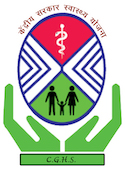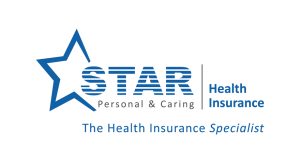If you’re one of the millions of people who suffer from a slipped disc, you know just how debilitating it can be. Between the pain and the loss of mobility, it’s hard to get through everyday life. But what if there was an ayurvedic treatment that could help? Ayurveda is a holistic approach to medicine that has been used for centuries in India. And according to recent studies, it may be an effective treatment for disc bulges and herniation. If you’re interested in trying out this ancient Ayurvedic Treatment for Slip Disc, read on for more information.
I am helping patients with Ayurvedic Treatment for Slip Disc for the last 15 years and have helped more than 15,000 patients. Patients from all sects and from around the globe. A better understanding of the problem and understanding of the “human spine”, as well as the “shastra”, makes us a distinguished place for the best Ayurvedic Treatment for Slip Disc in India.
What is a slip disc?
A slipped disc is a common disease of the backbone. The spaces between each vertebra are called discs or intervertebral discs. Each disc functions to separate the adjacent bones and allow flexibility in the backbone. They also ensure shock-absorbing function for weight-bearing body parts. Discs consist of a tough outer layer (annulus fibrosis) which contains jelly-like inner tissues (nucleus pulposus). These tissues resemble a soft springy dough, which acts as an efficient cushion during stress. Keep in mind that these internal tissues can produce a sufficient amount of water to equal up to 10% less weight i.e if you have 50 Lbs then 5 lbs are contributed by your internal tissue fluid inside the discs. If protrusion of this disc occurs at any level of the backbone then it is called a slipped disc or herniated disc.
The most common reason for a slip within the discs is generally due to aging, with loss in elasticity and strength of the tissues. It may occur at a young age also but it is not common. At a younger age, there are generally sprain injuries that give rise to such protrusions if they damage the outer layer (annulus fibrosis) or innermost (nucleus pulposus) segments of the discs. But no matter what the cause is if when these tissues bulge out from their normal position between two adjacent vertebrae, pinch spinal nerves and result in pain in the back, leg numbness, and lack of coordination.
What is the process of slip disc?
The slipping of the disc occurs when the annulus fibrosis ruptures and allows the nucleus pulposus to escape. This can be due to a number of reasons such as injury, age, or genetics. When the nucleus pulposus escapes, it puts pressure on the spinal cord and/or spinal nerves. This pressure can cause pain, numbness, and other symptoms.
What are the different stages of slip disc?
There are generally four stages of a slipped disc:
1. There is the initial stage where you may feel back pain only after long hours of sitting or standing. You may also feel some tingling, numbness, and weakness in your legs. This is generally due to compression of the spinal nerves.
2. The next stage often follows the initial stage where you begin to feel persistent pain in your back even if you don’t stress it. You may also feel occasional tingling, numbness, and weakness in your legs.
3. The third stage is generally when leg pain begins to increase and decrease with the change of positions like sitting or standing up/down. When the discs keep on compressing the nerves then it results in difficulty in walking steps due to weakened muscles. It is called ‘progressive locomotor ataxia.
4. Protrusion of disc tissues keeps increasing that causes severe nerve damage i.e.: when protrusion increases a lot then there begins a problem with bowel and bladder control which is known as “total cauda equina syndrome”.
Know more about Spinal Disc Problems
What are the different Causes behind slip disc?
There are many causes behind a slipped disc which include age, occupation-related stress, genetics, bad body postures at work or home, poor fitness levels, obesity, lack of physical activity and the list goes on. Here are the main causes:
Loss of lordosis:
This is the inward curve of the lower back. When this curve is lost, it puts extra stress on the discs and can lead to a slipped disc.
Poor posture:
Bad posture at work or home can put excess stress on the discs and can lead to a slipped disc.
Sitting for long periods:
Sitting for long periods of time can put pressure on the discs and can lead to a slipped disc.
Lack of exercise:
A lack of exercise can lead to weak muscles and ligaments which can put stress on the discs and lead to a slipped disc.
Weight gain:
Being overweight or obese can put extra strain on the spine and discs and can lead to a slipped disc.
Smoking:
Smoking can damage the discs and can lead to a slipped disc.
Age:
As we get older, our discs lose their elasticity and can lead to a slipped disc.
Does injury always responsible for Slip disc?
Not always. Sometimes they are due to years of bad posture or loss of lordosis, which is the inward curve of the lower back. There were no particular injuries that could be said as a cause for a slipped disc in some cases.
What are the Symptoms of slip disc?
The most common symptoms of a slipped disc are:
1. Back pain:
This is the most common symptom and it may vary from mild to severe. The pain may be present only when standing or walking and gets relieved when you rest. In some cases, the pain may radiate to other parts of the body such as the chest, arms, neck, or buttocks.
2. Leg Pain:
The pain in the leg may be due to compression of the spinal nerve in the lower back which results in sciatica. The pain may be present in one or both legs and may worsen with sitting or standing for long periods of time. It is generally relieved by lying down.
3. Numbness and Tingling:
This is also a common symptom and may be present in the back, legs or feet. It is usually due to compression of the spinal nerve.
4. Weakness:
This may occur due to compression of the spinal nerve and may affect one or more limbs.
5. Difficulty in Walking:
This may be due to weakness or numbness in the limbs.
6. Loss of Coordination:
This may be due to compression of the spinal cord and may affect movement and balance.
7. Pain During Stool Passage:
This may occur due to compression of the nerve root in the pelvis which gives rise to pain. The pain tends to be relieved by lying down or sitting with knees bent.
8. Lack of bladder control:
Due to compression on the nerves at sacral region, you may feel unable to empty your bladder completely and hence suffer from incontinence. This symptom is generally seen in people who have had a slipped disc for some time now.
9. Persistent Low Backache:
Some people may have persistent low backache even after physical therapy or medication has been finished instead of having one episode of severe back pain followed by complete recovery later on taking treatment. It is in such cases that you need to be sure of your diagnosis.
Identifying the cause of back pain with these symptoms is not too difficult, but diagnosing a slipped disc can be tricky. The intensity and pattern of pain will help get an idea of whether it has originated from within the spine or due to some other condition such as infection, fracture, etc.
How can you know whether your slipped disc pain is normal?
As it is not possible to detect a slipped disc just by its symptoms and there may be other conditions that have similar symptoms so sometimes getting an MRI scan would help in determining if it is a slipped disc or something else.
The classic feature of slip disc will be leg pain which may radiate into the buttock and groin on one side only which generally improves when you lie down and worsens while standing and walking especially after long periods of time. This symptom should improve gradually over a few weeks if it is due to a slipped disc or indicates any other serious medical conditions including cancer or infection requiring prompt investigation.
How is slip disc diagnosed?
The diagnosis of slipped disc is generally based on your symptoms, medical history, and physical examination. Your doctor will ask about your symptoms and medical history. He will examine your back for tenderness and muscle spasms, loss of normal leg reflexes, and sensation. It is important to note whether the pain travels below the knee or not. This area under the knee is called as “S1 dermatome” and pain in this area may indicate compression of the spinal cord or nerve roots from a slipped disc at L4/L5 level. In addition, there are various other tests that doctors may perform such as lab tests, MRI scans, etc. In some cases, a doctor may refer you to a neurosurgeon for evaluation of your case.
What are the treatments for slipped discs?
There are several treatments available depending on the severity of symptoms:
1) Bed Rest: For relief of mild back pain, your doctor may advise you to take bed rest for a short period of time.
2) Pain Medications: Non-steroidal anti-inflammatory drugs (NSAIDs) such as ibuprofen and naproxen can help to relieve the pain. Your doctor may also prescribe other medications such as muscle relaxants and opioids for severe pain.
3) Physical Therapy: Physical therapy may be helpful in strengthening the muscles around the spine and improving flexibility. It may also help to reduce pain and improve function.
4) Surgery: In some cases, surgery may be necessary to remove the herniated disc material that is compressing the spinal nerves. This is generally done only if other treatments have failed.
5) Alternate Treatments:
What does Ayurveda say about Slipped Disc?
Ayurveda states that all the tissues in our body are made up of five basic elements viz. Prithvi (earth), Jal (Water), Agni (Fire), Vayu (Air) and Akash (ether). When these elements become defective and lose their balance, it gives rise to diseases. In the case of slip disc too, there may be a problem with any or all of these five elements leading to herniation. The disturbing element or Dosha will cause inflammation in this area, thus giving rise to pain and other symptoms such as numbness and weakness.
Ayurvedic Treatment for Slip Disc
Ayurveda suggests a holistic approach for the treatment of slipped discs which includes detoxification of the body, correction of the diet, and strengthening of the muscles. Panchakarma is an effective detoxification procedure that helps to remove toxins from the body. Diet plays an important role in the best Ayurvedic Treatment for Slip Disc and specific foods that help to improve the condition are listed below:
Unfortunately, scientific medicine does not have very effective treatment options available yet for slipped disc cases. Ayurveda however has several effective treatment options, which are non-invasive and have very few or no side effects. They work on the principle that by bringing back the balance in these five elements, the problem of slipped discs can be cured completely without any surgery or medication. Here are a few points that we consider in Ayurvedic Treatment for Slip Disc:
Where is the disc herniation
Is it affecting S1 or L4/L5 level which may affect the bladder, leg or back muscles? if it’s at lower lumbar level can be treated with Yoga and Pranayama whereas the upper lumbar has to be treated by surgery.
The cause behind the Slip disc
What could have caused this? Any trauma? Loss of fat tissue in the muscle wall could have caused this problem. This could lead to excessive stress on the weaker part causing a rupture (herniation). There are several factors that can cause an increase in intra-abdominal pressure like prolonged coughing, lifting heavyweight, straining during bowel movements, etc. Regular practice of Yoga Asanas leads to better alignment of the spinal cord. Yoga helps to strengthen the lower back muscles and other postural muscles like hamstring, hip flexors, etc. These are important stabilizing muscles for correct posture which is essential in maintaining pressure on the proper disc space while doing any kind of physical activity; this will help prevent future herniation.
Herniated vs Ruptured
There can be 2 types of disc rupture: Internal and External. In case of external rupture, the broken material from inside protrudes outside through a tear in the annulus fibrosis, thus creating a bulge or protusion on an X-ray. In case of internal rupture there is no such protrusion but with time there is compression of nerve roots due to the bulging disc material.
There is a lot of controversy among the scientific community as to whether a ruptured/bulging disc can be cured completely or not. Scientifically, it is said that a herniated / bulging disc will not go away on its own and surgery may be required to remove this material from outside. In Ayurveda however, there are many examples of patients who have been cured completely of slip disc (Read case studies on our exclusive website for slip disc) even though they had an external rupture. It has been found that with continuous practice of Yoga exercises along with proper dietary modifications, these individuals were able to heal themselves naturally without going for any surgery.
So, if you are suffering from a slipped disc, do not despair! There are several effective treatments available in Ayurveda that can cure you completely without any surgery or medication. Consult an experienced ayurvedic doctor for best results.
How does Panchakarma help in Slipped Disc Treatment?
Ayurvedic practitioners believe that Panchakarma is highly effective in keeping the body free of toxins and other wastes. It helps to remove the excess Dosha from the system, thus reducing pressure on the affected area (i.e., slipped disc area). The results are almost like magic! If pain relief has not been achieved by using Ayurvedic oils or medications then it might be worthwhile considering undergoing Panchakarma treatment for complete cure.
Kati Basti For Slip disc in Lumbar Spine
Kati Basti is a treatment procedure in Ayurveda for slipped discs. This involves administering medicated oil or ghee on the back of the patient at regular intervals. This helps to alleviate pressure over the spinal nerves thus giving relief from pain. It has been observed that this treatment modality gives almost immediate relief from pain, which lasts for a longer duration as compared to other methods.
Greeva Basti for Slip disc in the cervical spine
Greeva Basti is another treatment procedure in Ayurveda for slipped discs. This involves administering medicated oil or ghee on the neck of the patient at regular intervals. This helps to alleviate pressure over the spinal nerves thus giving relief from pain. It has been observed that this treatment modality gives almost immediate relief from pain, which lasts for a longer duration as compared to other methods.
Lepam for slip disc
Yes, Taking lepam is very helpful. Lepam is a process of applying the herbal paste to the affected part. This pack not only alleviates pain but also reduces swelling and tissue damage in slipped disc cases. Lepam increases blood supply to the area thus giving a healing effect over time. Lepam can be taken internally along with the external application for faster results. The herbs required will depend upon the location of herniation i.e., whether it is cervical or lumbar. In most cases, Kapikachhu ( Mucuna pruriens ) powder will be required either alone or along with Laksha Gavya (cow’s ghee) and Yava Sara Thaila (oat kernel). These herbs help in removing the compression on the nerve root and provide relief from pain.
How long does time Ayurvedic Treatment for Slip Disc to cure slipped discs?
It generally takes around two weeks of continuous application of herbal oil before significant results are achieved. Even after that, patients have to use the oil regularly for some time prior to complete recovery from their symptoms – usually about three months or more depending on the individual’s Dosha status and the severity of the disc slip.
Sukhayu Ayurved about Best Ayurvedic Treatment for Slip Disc in India
There are many treatments for slipped discs, but the most effective and long-lasting is Ayurveda. Ayurveda is a holistic system of medicine that treats the whole person, not just the symptom. There are many herbal oils and medications available that can give excellent relief from pain and help to cure the slipped disc permanently. Consult an experienced ayurvedic doctor to get the best treatment for your condition.
You’ve read about how Ayurveda can be used as a treatment for those suffering from chronic back pain, but what if you need to have surgery? Surgery is often the first course of action doctors take when treating patients with slipped discs. But there are alternatives.
One option is sacroiliac joint injections which aim to reduce inflammation and decrease pressure on your spinal cord. Another alternative worth considering before opting for surgery is looking at natural treatments like yoga or Panchaakrma that may provide relief without any long-term side effects. If you feel like these options might not work out for you, consult us today! Our specialists will listen closely to your needs and present all viable solutions so together we can come up with an effective













